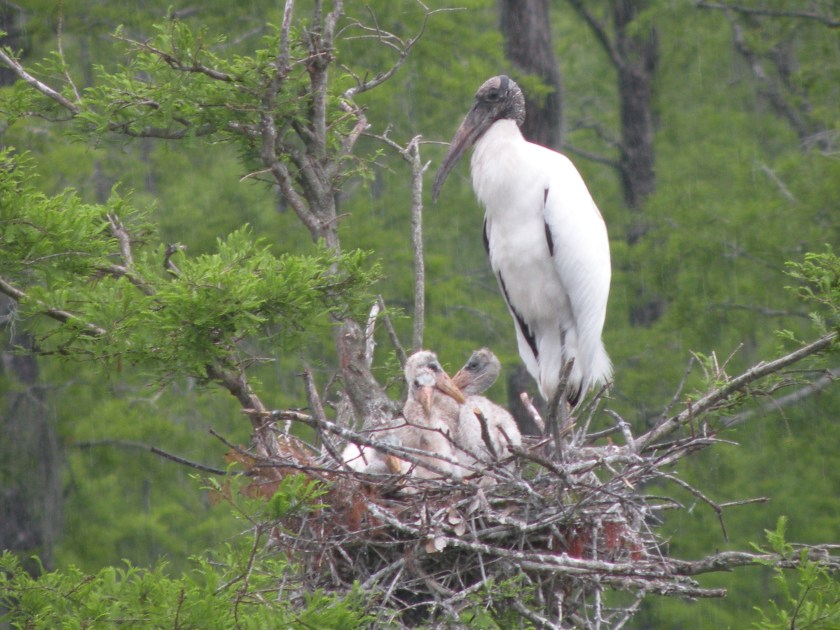
Large, white Wood Storks wade through southeastern swamps and wetlands. It is a good flier, soaring on thermals with neck and legs outstretched. This bald-headed wading bird stands just over 3 feet tall, which makes it one of the tallest wetland bird. A whooping crane beats out the Wood Stork as tallest.
Wood Storks breed in fresh and brackish forested wetlands. They forage in wetlands, swamps, ponds, and marshes with water depths of around 4–12 inches. They tend to use open wetlands more frequently for foraging than closed canopy wetlands. Storks roost in trees along the water’s edge.
Wood Storks primarily eat fish and other aquatic invertebrates, but sometimes take seeds, amphibians, nestlings, and reptiles. If you get a chance to watch them eat, you will see they mostly search with their bill. When the bill detects a fish, it snaps closed and the fish if swallowed whole.

Males and females gather sticks from the surrounding areas. Together they build a large, bulky stick nest 3–5 feet wide. They line the nest with greenery that eventually gets covered in guano (seabird excrement), which helps hold the nest together. Nest building typically takes 2–3 days, but the pair continues to make improvements throughout the nesting period. They have 1-5 eggs and they hatch in 55 days. Despite the myth that Wood Storks mate for life, pairs form at the breeding colony and stay together only for a single breeding season.
Fun Fact: Kids love water parks when it gets hot outside. Nestling birds don’t really have that option, but to keep nestlings cool, Wood Stork parents regurgitate water over the nestlings. Maybe not as fun as a water park, but it does the trick.
There is low conservation concern for the Wood Stork


Article submitted by: Melanie Jerome
Photographs provided by: Bob Mercer, Ed Konrad and Charles Moore
This blog post is part of a series SIB will publish on a regular basis to feature birds seen in the area, both migratory and permanent residents. When possible we will use photographs taken by our members. Please let us know if you have any special requests of birds you would like to learn more about.


